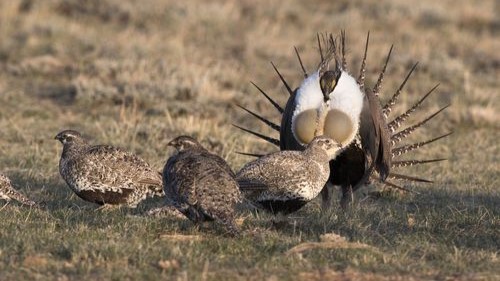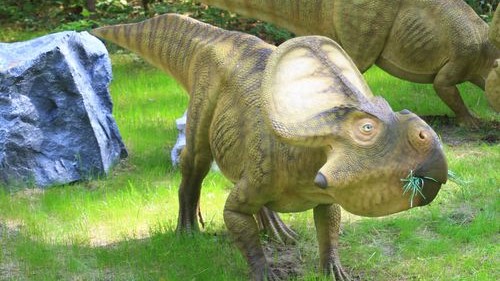You may have seen photographs of a peacock’s fabulous tail feathers. Peacocks have an amazing, colorful display of feathers they show to peahens to attract them. But they are just one of many species of birds that do unusual things to attract a mate. Another one is the greater sage-grouse.
Flocks of greater sage-grouse live on the prairies and sagebrush shrublands of the western United States and Canada. These birds might remind you a little bit of turkeys. Like turkeys, they have an impressive fan of tail feathers, although they are all brown, black, and white.
These birds are smaller than turkeys, too. The males can grow up to 2 feet tall and 30 inches long. The males are larger than the females. They’re called sage-grouse because they nest on the ground near sage plants, which are also a huge part of their diet.
Each year, the males perform a rather weird dance to attract a female. This behavior is called “lekking,” and the area where this occurs is called a “lek.” When the greater sage-grouse are lekking, they puff out their chests and spread their tail fans. They fill large yellow air sacs in their chest with as much air as they can and then let it out quickly with a loud pop. The sound can be heard nearly two miles away! During their spring mating season, females hear these sounds and travel to the lek. The females carefully watch each male’s performance like the judges on a TV talent show. The females may take several days to choose a male.
Unfortunately, many of these unusual birds are injured each year. They fly into wire fences because they are unable to see the wire.
Conservationists working at the Teton Raptor Center in western Wyoming want to help the greater sage-grouse. They are marking more fences with flags or vinyl markers so that the sage-grouse can see them. So far, this effort has lowered the number of sage-grouse injuries caused by fences by more than 80 percent!
The center is focusing its efforts on fences that are close to lekking grounds. Their research shows this is where most of the accidents take place. Marking the fences close to these areas will prevent injuries and save the lives of many sage-grouse.
All of this effort means these interesting birds can dance another day.









